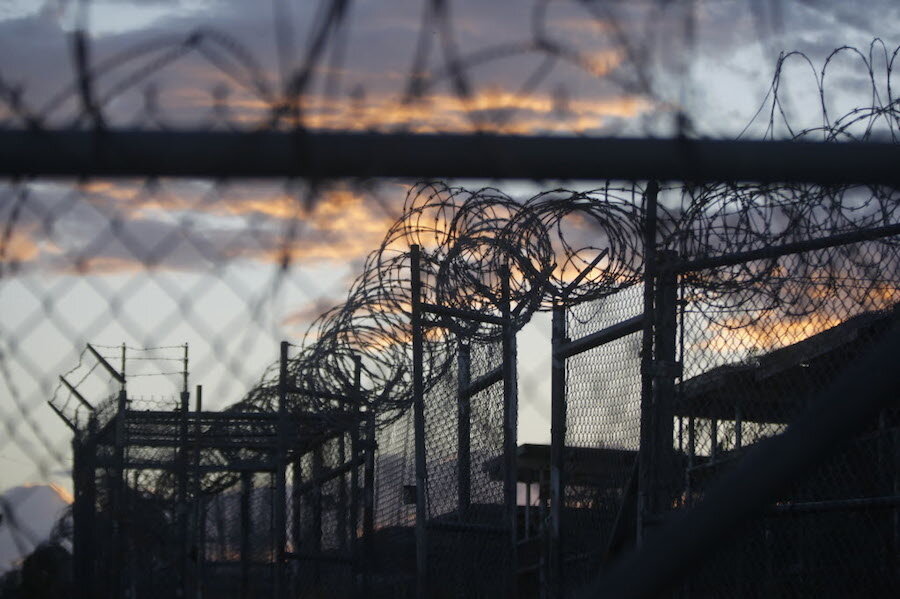Obama's plan to close Guantánamo Bay in 'final stages'
Loading...
When President Obama came into office in 2009, he vowed to close the Guantánamo Bay prison within a year.
Six years later, his administration is introducing yet another plan to Congress to close the contentious prison holding terrorism detainees in Cuba. White House spokesman Josh Earnest said the administration hopes to “short circuit” opposition from Republicans in Congress who have prevented the prison’s closure in the past, Reuters reports.
"There has got to be a better way for us to spend taxpayer dollars than to spend more than $100 million a year operating a prison that only has, I think now, 116 inmates," said Mr. Earnest.
"There also has to be a better way for us to protect our national security interests than to deliver on a silver platter a particularly effective recruiting tool for terrorists, which is to continue the operation of that prison," he added.
The fate of the remaining 116 inmates has been the central controversy thwarting Mr. Obama’s efforts to close the prison.
According to the Associated Press, lawmakers would review the White House’s new plan under a defense policy bill passed by the Senate, and decide whether to ease restrictions that complicate the transfer of detainees out of the prison.
The White House claimed it would veto the defense bill over several issues, including an effort to make it more difficult to close the facility. Yet Obama has shied away from similar veto threats when Congress previously rejected plans to shut it down.
Many lawmakers have denounced the prison’s closure out of fear that if inmates from the war on terror were to be sent home to the Middle East, they would return to their violent ways. They also object transferring detainees into US prisons, The Associated Press reports.
"Given the serious threats America faces, it's incredible to see this administration threatening to veto a bill that gives our troops a pay raise, strengthens our cybersecurity, and imposes greater restrictions on releasing terrorists," said Cory Fritz, spokesman for House Speaker John Boehner.
As of January 2015, only six of the 115 detainees transferred during the Obama administration are confirmed to have reengaged in militant activities.
Certain laws restricting transfers have complicated the process of approving proposed transfer deals, according to The New York Times. One statute requires the Defense secretary to notify Congress that any risks imposed by an inmate's release have been “substantially mitigated,” 30 days before a scheduled transfer.
Former Secretary of Defense Chuck Hagel approved the transfer of more than two dozen detainees between November and January. His successor, Ashton Carter, permitted the release of six Yemeni detainees in June yet has not approved any newly proposed transfers, Reuters reports.
Most of the prison’s 116 inmates have been held for about 13 years. Fifty-two of them are recommended for transfer if security conditions can be met. The White House has refused to send 69 Yemenis home because of the ongoing violence in their homeland.
Lisa O. Monaco, Obama’s top counterterrorism adviser, said in an official statement that the administration is diligently working to close the prison.
“This is a goal that the entire national security team is working together to fulfill – from the White House to the Departments of Defense, State, and Justice, as well as the intelligence community,” she said.
“The safety of Americans is our first priority, and each transfer decision involves careful vetting and negotiation of detailed security arrangements. These deliberations take time because these are important decisions.”
Guantánamo Bay was created for Al Qaeda and Taliban detainees after the Sept. 11, 2011 attacks. According to Reuters, the prison has been the site of alleged abuses, including the waterboarding of prisoners under interrogation, and the White House says it is used as a propaganda tool for militant groups recruiting supporters to fight America.







